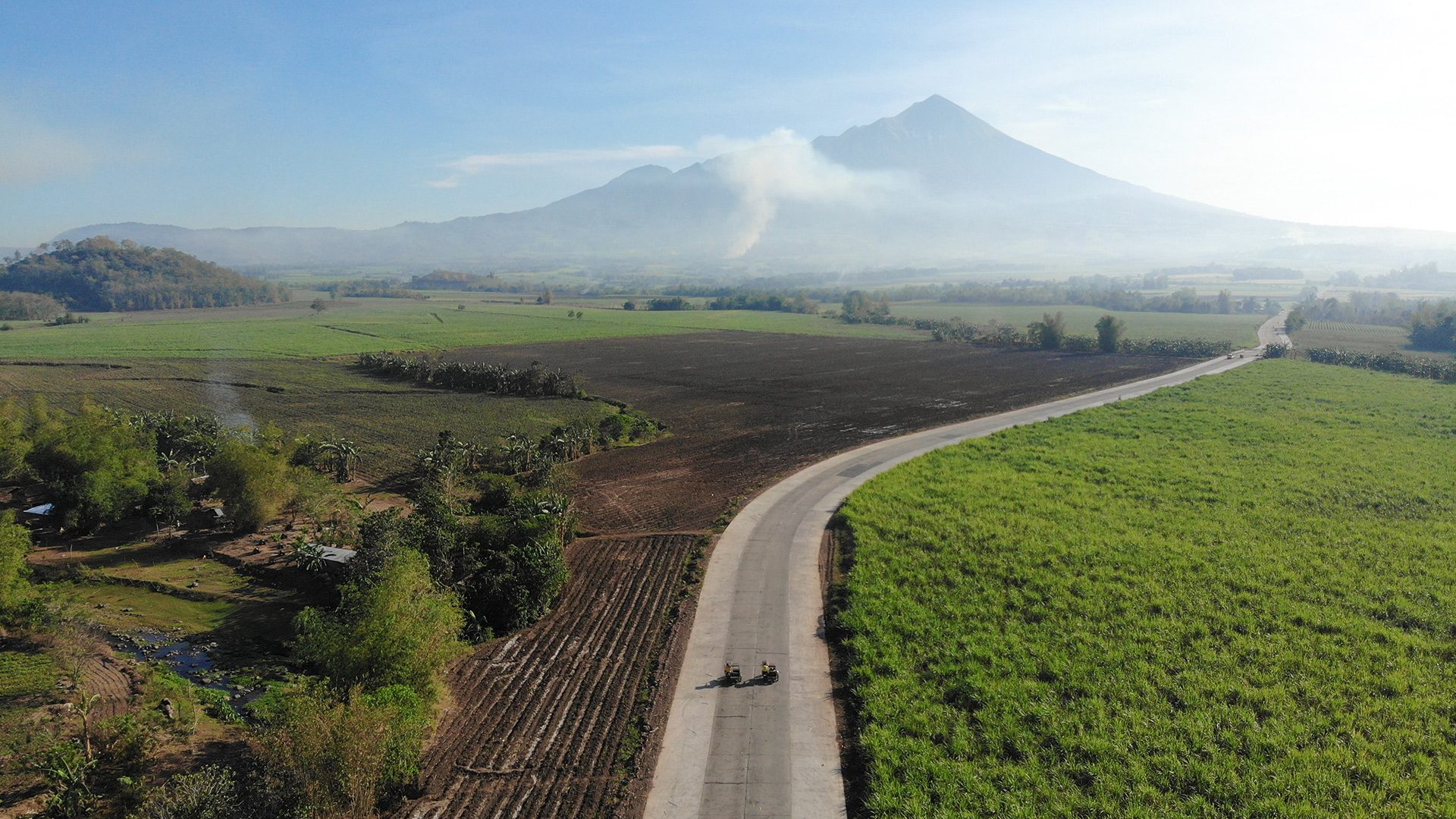SUMMARY
This is AI generated summarization, which may have errors. For context, always refer to the full article.

Shattering the silence of the night on Monday, June 3, an “explosive eruption” occurred at Kanlaon Volcano in Negros Occidental, leading the Philippine Institute of Volcanology and Seismology (Phivolcs) to elevate the alert level to 2.
The volcanic activities prompted mandatory evacuation and closure of businesses around the area. It also disrupted flights across the country.
Where is Kanlaon Volcano located?
Spanning 24,557.60 hectares, Kanlaon Volcano extends across the political borders of the cities of Bago, La Carlota, San Carlos, and Canlaon, as well as the municipalities of Murcia and La Castellana.
Some of the barangays surrounding Kanlaon Volcano are the following:
- Bago City: Barangays Binubuhan, Ilijan, and Mailum
- San Carlos City: Barangays Codcod and Quezon
- La Carlota City: Barangays Araal and Yubo
- Canlacon City: Barangays Pula, Masulog, Linothangan, Malaiba, and Lumapao
- Municipality of Murcia: Barangay Minoyan
- Municipality of La Castellana: Barangays Biak na Bato, Cabacungan, Cabagnaan, Camandag, Mansalanao, Masulog, Robles, and Sag-ang
How active is Kanlaon Volcano?
Kanlaon Volcano is the third most active volcano in the Philippines, the local government of Canlaon City website showed. Most of the explosion of Kanlaon Volcano is phreatic in nature, meaning fragments of preexisting solid rock in the volcano are expelled.
According to the Smithsonian Institution, Kanlaon Volcano has at least two craters: Lugad and Southern Crater.
According to the Philvocs database, Kanlaon Volcano last erupted on December 20, 2017. The earliest recorded eruption of the volcano dates back to 1866.
Kanlaon Volcano also erupted around the same time 21 years ago, from June 3 to 4, 2003.
Can you climb Kanlaon Volcano?
With an elevation of 2.435 km, Kanlaon Volcano is the highest peak in the Visayas. Mountain climbing and trekking activities are allowed, except during bad weather or when Philvocs declares that there's volcanic activity.
Tourists can choose from various trails, each offering a unique hiking experience. The Ara-al and Mapot trails take up to a day to complete, while the shortest option is the 8-kilometer Masulog trail. For those seeking a more extended adventure, the longest route requires approximately two days to reach the summit.
A permit from the Department of Environment and Natural Resources is required to climb the mountain.
Kanlaon Volcano is also home to some waterfalls such as the Kipot Twin Falls, Sudlon Waterfalls, and Busay Gamay Falls. There are also a couple of hot springs in the area such as Mambucal Hot Springs, Bucalan Hot Spring, and Bungol Hot Spring.
In 2001, Kanlaon was declared a natural park because of its “biological resources and its aesthetic, socio-cultural, economic and ecological importance to the Island of Negros.”
Where does the name of Kanlaon Volcano come from?
According to a local folktale, as mentioned in the city of Canlaon’s website, there was a couple named Kang and Laon, who eloped after their warring chieftain fathers tried to keep them apart. They were captured and died in the wilderness, and from their deathbed, a volcano emerged which is now known as Kanlaon Volcano.
Another version of the legend says "Kanlaon" comes from the Visayan word "ka," meaning "for," and "Laon," the name of an ancient Hiligaynon goddess. – Rappler.com
Add a comment
How does this make you feel?












There are no comments yet. Add your comment to start the conversation.